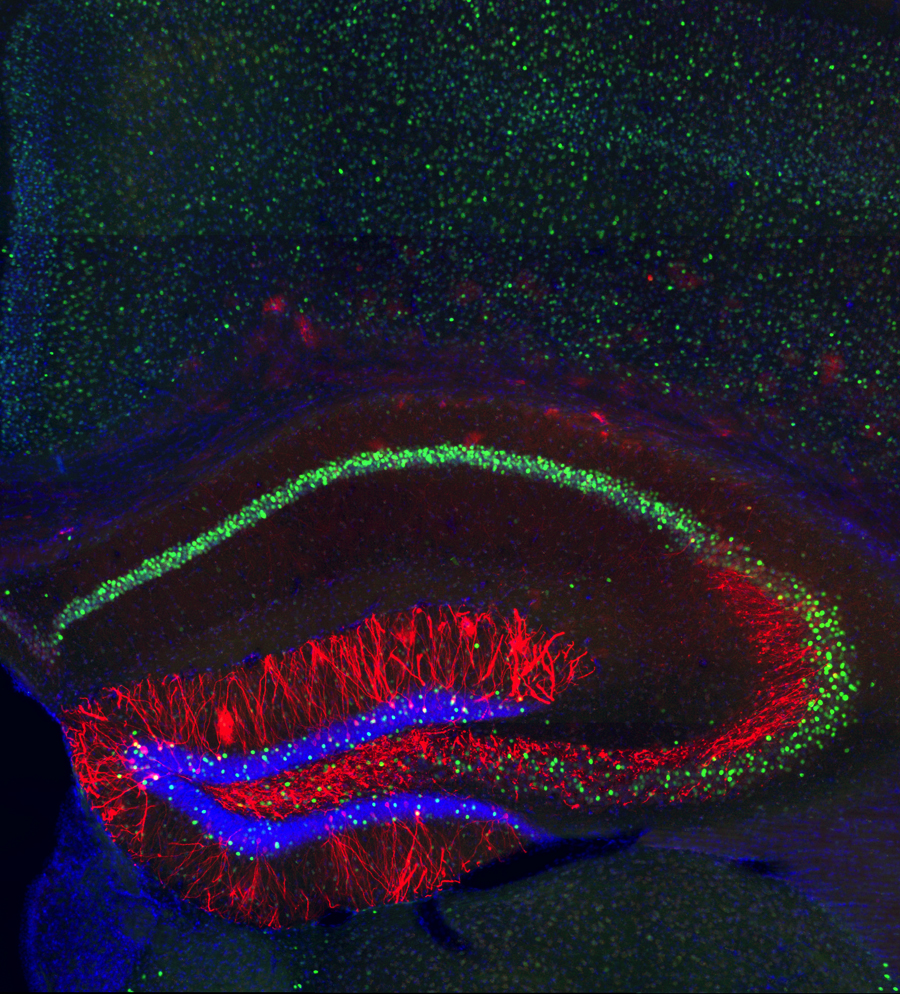Neuroscientists plant false memories in the brain
MIT study also pinpoints where the brain stores memory traces, both false and authentic
July 26, 2013

MIT neuroscientists identified the cells (highlighted in red) where memory traces are stored in the mouse hippocampus (credit: Steve Ramirez and Xu Liu)
The phenomenon of false memory has been well-documented: In many court cases, defendants have been found guilty based on testimony from witnesses and victims who were sure of their recollections, but DNA evidence later overturned the conviction.
In a step toward understanding how these faulty memories arise, MIT neuroscientists have shown that they can plant false memories in the brains of mice.
They also found that many of the neurological traces of these memories are identical in nature to those of authentic memories.
“Whether it’s a false or genuine memory, the brain’s neural mechanism underlying the recall of the memory is the same,” says Susumu Tonegawa, the Picower Professor of Biology and Neuroscience and senior author of a paper describing the findings in the July 25 edition of Science.
The study also provides further evidence that memories are stored in networks of neurons that form memory traces for each experience we have — a phenomenon that Tonegawa’s lab first demonstrated last year.
Neuroscientists have long sought the location of these memory traces, also called engrams. In the pair of studies, Tonegawa and colleagues at MIT’s Picower Institute for Learning and Memory showed that they could identify the cells that make up part of an engram for a specific memory and reactivate it using a technology called optogenetics./.../
No comments:
Post a Comment